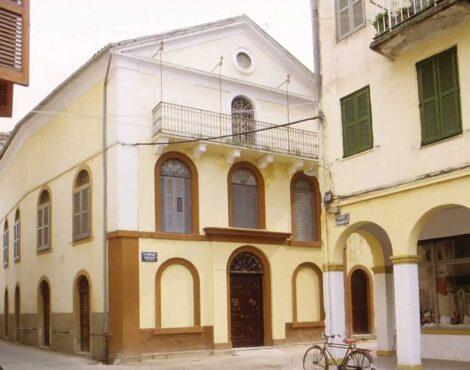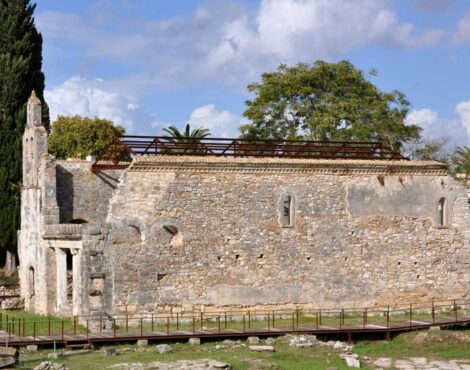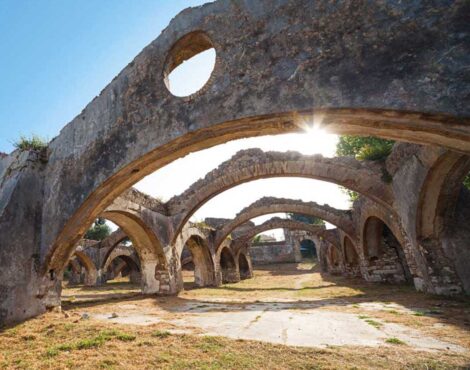Silent Walls That Speak
Beyond Corfu’s bustling squares and famous monasteries lies a quieter, more intimate treasure — its hidden frescoes. Tucked inside small chapels and countryside churches, these sacred paintings are often overlooked by casual visitors, yet they tell stories of devotion, artistry, and resilience. Time has faded their colors and cracked their plaster, but their beauty endures, offering travelers a glimpse into the spiritual and artistic heart of the island.
The Byzantine and Post-Byzantine Legacy
Corfu’s frescoes trace back to the Byzantine era, when church walls became “books of the people,” illustrating biblical stories for communities that could not read. Under Venetian rule, many of these churches were repainted, blending Byzantine traditions with Western Renaissance influences. As a result, Corfu’s frescoes embody a rare artistic dialogue between East and West.
Key Features of Corfiot Frescoes:
- Rich iconography of saints, angels, and biblical scenes.
- Use of deep blues, reds, and gold, though often faded.
- Fusion of Byzantine stylization with Venetian perspective.
1. The Chapel of Agios Nikolaos in Gastouri
Hidden among olive groves near Gastouri, this small chapel houses frescoes dating back to the 16th century. Though partly worn, the figures of saints retain their solemn gaze. The atmosphere is enhanced by the surrounding nature, making the visit a deeply contemplative experience.
2. Panagia Antivouniotissa, Corfu Town
One of the island’s most significant Byzantine monuments, the church-turned-museum preserves exceptional frescoes and icons. Here, visitors can see how Corfiot artists developed their style under Venetian influence, producing sacred art that bridges two worlds.
Highlights:
- Frescoes depicting the Virgin Mary and the Twelve Apostles.
- Exhibits of portable icons and liturgical artifacts.
- A living museum of Corfiot religious art.
3. The Chapel of Agia Kyriaki, Paleokastritsa
This tiny seaside chapel offers breathtaking views and humble yet striking frescoes. The walls tell stories of saints and martyrs, painted with rustic yet heartfelt technique. Standing inside, with the sea shimmering below, one feels the merging of divine and natural beauty.
4. Agios Ioannis in Kynopiastes
In the traditional village of Kynopiastes lies a church with frescoes dating back to the 15th century. Though fragments remain, they are powerful in their simplicity. Local volunteers have worked to preserve what’s left, keeping alive a tradition of care for sacred heritage.
5. Agios Simeon, Ano Korakiana
This hillside church contains hidden frescoes that reward those who make the climb. Depictions of the Last Judgment and heavenly hosts fill the walls, emphasizing the church’s role as both a spiritual refuge and a teaching tool for villagers centuries ago.
Frescoes as Windows to the Past
Each fresco tells more than a biblical story. They are records of:
- Local identity: Saints often painted in traditional Corfiot dress.
- Cultural exchange: Venetian symbols appearing alongside Orthodox motifs.
- Endurance: Artworks surviving wars, earthquakes, and weathering.
Through them, we glimpse not only faith but also the daily lives and aspirations of those who prayed beneath these painted domes.
Challenges of Preservation
Sadly, many of Corfu’s hidden frescoes are at risk:
- Humidity and salt air erode pigments.
- Lack of funding limits conservation efforts.
- Remote chapels are vulnerable to neglect or vandalism.
Still, grassroots initiatives and cultural associations work tirelessly to protect this fragile heritage.
Visiting Tips
- Ask locals: Many chapels remain locked; nearby residents often hold the keys.
- Respect the space: These are sacred sites, not just attractions.
- Bring a flashlight: Some frescoes are in dimly lit corners.
- Timing: Morning or late afternoon light creates magical atmospheres.
Art That Whispers
Corfu’s hidden frescoes may not dazzle with grandeur, but they move with intimacy. In their fading lines and gentle colors lies the soul of an island that has balanced faith and art for centuries. For those willing to leave the main roads and step into shadowed chapels, the reward is profound: sacred art that whispers across time, connecting today’s traveler with generations of devotion.





